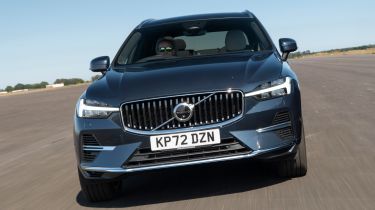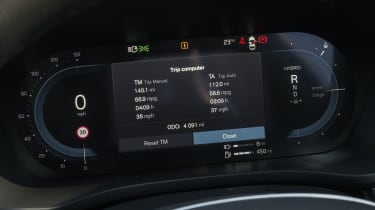Volvo XC60 review - MPG, CO2 and running costs
Volvo has ditched diesels in the XC60, but greener T6 and T8 plug-in models offer big company car tax savings anyway

Volvo has declared that it’ll stop production of diesel engines by 2024, but even if you wanted a diesel-powered XC60, oil-burners have already been removed from the lineup. There’s no fully-electric version mind you, but buyers do have a choice of a mild-hybrid assisted petrol engine or two plug-in hybrids (PHEVs).
The B5 mild-hybrid is cheaper and doesn’t require you to plug it in to charge it. At the heart of the system is a starter/generator that uses 48V technology to harness electricity that would otherwise be wasted under braking, and then gives it back to the engine during acceleration. The idea is that this energy helps the car to improve fuel economy, without the need to plug it in.
According to Volvo, the mild-hybrid XC60 will average 35.3mpg across a mixture of driving conditions, while CO2 emissions stand at 181g/km.
If you do have somewhere you could charge a car, but aren’t quite ready to make the switch to electric, the two plug-in-hybrid XC60s could be the solution. Both the XC60 Recharge T6 and T8 pair a 2.0-litre four-cylinder petrol engine with an electric motor and 18.8kWh battery. According to the official WLTP figures, the less powerful T6 can return 282.5mpg on average, while the T8 will manage 256.8mpg.
Used - available now
That’s in ideal conditions, and if you remember to charge the XC60’s battery. Otherwise, you’ll get closer to 30mpg, as we experienced first-hand during our group test with an XC60 Recharge T6, Lexus NX 450h+ and Mazda CX-60 e-Skyactiv. With their batteries depleted, the Volvo returned 32.6mpg, compared to 42.3mpg from the Mazda and a very impressive 48.9mpg from the Lexus, which works as a full-hybrid once the main PHEV system battery is flat.
CO2 emissions stand at 23g/km and 24g/km for the T6 and T8, respectively. That’s why the mild-hybrid XC60 currently attracts a 37 per cent Benefit-in-Kind (BiK) company car tax rate, compared to the 8 per cent band the plug-in hybrid versions land in. That said, neither can match the rock-bottom 2 per cent rate electric cars like Volvo’s new EX30 and EX90 attract in for the time being.
If you decide to buy a secondhand XC60, you may get one with a B4 diesel motor, which emits from 167g/km of CO2 and returns 39.2-44.1mpg on the combined cycle. During our own testing with an XC60 B4 we managed to average 38.8mpg, which is pretty close to the manufacturer's figures. Another discontinued option is the B6 petrol model which will require more trips to the fuel station as Volvo says it can achieve an average of 34.0mpg at best.
Electric range, battery and charging
The XC60 Recharge originally launched with an 11.6kWh battery but it was increased to 18.8kWh as part of a series of updates in 2022, although only 14.9kWh of that is a usable capacity. Either way, the upgrade boosted the plug-in hybrid XC60’s pure-electric driving range from 33 to 47 miles, which is further than a BMW X3 or Lexus NX PHEV will officially go on a single charge, although not by much.
Fully recharging the XC60 Recharge’s battery takes about three hours using a typical 7kW home wallbox. Like the majority of plug-in hybrids, the XC60 Recharge doesn’t offer any rapid-charging capabilities.
Insurance groups
The mild-hybrid Volvo XC60 sits in insurance groups 34-38 (out of 50), depending on the exact trim level you go for. Meanwhile the XC60 Recharge T6 lands in group 40 and the more powerful Recharge T8 sits in group 41, regardless of the specification.
You can get personalised car insurance quotes fast with our comparison tool powered by Quotezone...
Depreciation
The XC60 performs reasonably in terms of holding on to its value. According to our latest expert data, on average it retains around 51 per cent of its list price over three years and 36,000 miles.
To get an accurate valuation on a specific model check out our valuation tool...














